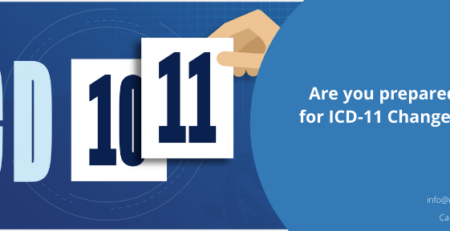Defining New Patient
New patient is defined as, an individual who has not received any professional services, Evaluation and Management (E/M) service or other face-to-face service (e.g., surgical procedure) from the same physician or physician group practice (same physician specialty and subspecialty) within the previous 3 years. For example, if a professional component of a previous procedure is billed in a 3-year time period, (e.g., lab interpretation) and no E/M service or other face-to-face service with the patient is performed, then this patient remains a new patient for the initial visit.
An interpretation of a diagnostic test, reading an x-ray or electrocardiogram (EKG) etc., in the absence of an E/M service or other face-to-face service with the patient does not affect the designation of a new patient. If a patient was seen by a physician in a clinic and sometime during the 3-year period was seen again by that same physician at the same clinic, at another clinic, or in this physician’s private practice, this is still an established patient situation. If this patient sees another physician of the same specialty and subspecialty at a location where the first physician also practices, this is also an established patient situation.
Defining Established Patient
Established patient is defined as, an individual who has received any professional services, E/M service or other face-to-face service (e.g., surgical procedure) from this provider or another provider (same specialty or subspecialty) in the same group practice within the previous three years
Key Differences between New and Established Patient
- Important difference between the codes is that the new patient codes (99202–99205) require that all three key components (history, exam and medical decision making) be satisfied, while the established patient codes (99212–99215) require that only two of the three key components be satisfied. Because the criteria for coding problem-oriented new patient visits are more stringent, there are also cases where the same service components would yield an established patient code with more RVUs than the appropriate new patient code.
- For the new patient codes, the required components and the relative value units (RVUs) are greater than for established patient codes at the same level. So, in some cases, not distinguishing new patients from established patients amounts to short changing yourself. For example, a visit that produces a detailed history, detailed exam and decision making of low complexity qualifies as a level-IV visit if the patient is established and a level-III visit if the patient is new. The established patient visit amounts to 2.17 RVUs ($79.82), while the new patient visit amounts to 2.52 RVUs ($92.69).
- Problem-oriented encounters for both new and established patients can also be coded based on the total time spent with the patient if counseling/coordination of care constitutes more than 50 percent of the total encounter time. The times associated with the new patient services, however, are higher than for the established patient encounters.
Other Things to Consider
- Professional Services: Professional services are defined as ‘those face-to-face services rendered by a physician and reported by a specific CPT code(s).’ Suppose you provided the interpretation of an ECG for an inpatient you did not actually meet in person. When you see the patient in your office (assuming this occurs within the next three years), you would report the E/M service you provide using a new patient code since there was no face-to-face encounter during the inpatient stay.
- Group Practice: Group practices with multiple practice sites having the same tax identification number are considered as a single group. In a single-specialty practice, the patient’s encounter should be reported with a code in a new patient category only if no physician or other provider who reports services using CPT codes in that group has seen the patient within the last three years. In a multispecialty practice, a patient might be considered new even if he or she has received care from several other physicians in the group and a medical record is available. The distinguishing factor here is the specialty designation of the provider.
- Consultation Services: If a patient is sent to you for an opinion or advice, the encounter may be a consultation service rather than a new patient encounter. For example, if you are asked to see a patient for a pre-operative clearance or for evaluation of a medical problem, the appropriate category might be consultation services. Since the same consultation codes apply to both new and established patients, it is not necessary to apply the new patient definition.
- For Medicare Patients: Medicare has stated that a patient is a new patient if no face-to-face service was reported in the last three years. The group practice and specialty distinctions still apply, but ‘professional service’ is limited to face-to-face encounters. Therefore, if you see a Medicare patient whom you have seen within the last three years, you must report the service using an established patient code. On the other hand, if a lab interpretation is billed but no face-to-face encounter took place, the new patient designation might be appropriate.
Clearing this confusion of new patient vs established patient is really important to receive accurate insurance reimbursements and to keep your practice audit-proof. Medisys Data Solutions can assist you in selecting accurate codes for new patient as well as established patient. To know more about our billing and coding services, contact us at info@medisysdata.com/ 302-261-9187












